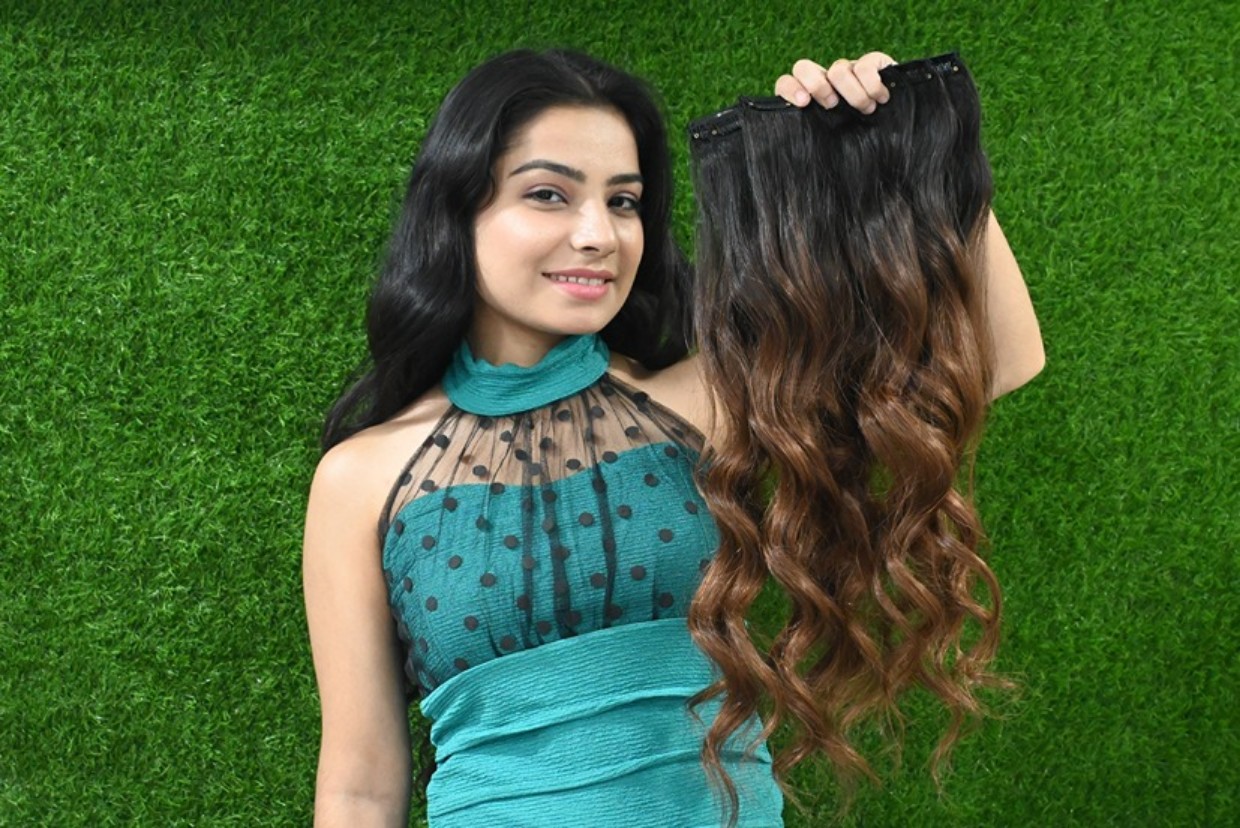The Pros and Cons of Human Hair vs. Synthetic Extensions
Hair extensions have become a vital part of the beauty and fashion industry, offering an easy way to enhance length, volume, and style. Whether you’re a salon professional, a beauty enthusiast, or someone looking to switch up your look, choosing between human hair and synthetic hair extensions is a crucial decision. Both types offer unique benefits and limitations, and the right choice depends on your lifestyle, budget, and expectations for styling and longevity. In this blog, we’ll provide a comprehensive comparison of human hair vs. synthetic extensions, helping you make an informed decision for your beauty needs.
Understanding Human Hair Extensions
Human hair extensions are made entirely from real human hair collected from donors. This type of extension is widely regarded as the most natural-looking and versatile option available on the market. Because it is actual human hair, it blends seamlessly with your own and can be styled just like your natural hair.
One of the most significant advantages of human hair extensions is their ability to withstand heat styling. You can curl, straighten, and blow-dry them without worrying about damage, just as you would with your own hair. Additionally, they can be dyed and toned to match your exact shade, offering unparalleled customization. This makes them ideal for users who frequently change their hairstyles or desire a seamless integration with their natural look.
Human hair extensions also boast a longer lifespan compared to synthetic alternatives. With proper care, they can last anywhere from six months to over a year, depending on how often they are worn and maintained. This durability makes them a preferred choice for many salon professionals and individuals seeking a long-term hair solution.
However, there are also some downsides to consider. Human hair extensions typically come with a higher price tag due to the cost of sourcing, processing, and ensuring quality. They also require regular maintenance, including washing, conditioning, and styling, to keep them looking their best. Without proper care, they can become dry or frizzy, similar to natural hair.
Exploring Synthetic Hair Extensions
Synthetic hair extensions, on the other hand, are made from man-made fibers such as acrylic, polyester, or nylon. These fibers are designed to mimic the appearance and texture of human hair but are manufactured in a way that makes them more affordable and easier to produce on a larger scale.
One of the most significant benefits of synthetic extensions is their affordability. They offer an accessible entry point for those who want to experiment with hair extensions without committing to the higher cost of human hair. Additionally, synthetic hair comes pre-styled, meaning the curls or waves remain intact even after washing, saving time and effort for users who want a ready-to-wear solution.
Synthetic extensions are also relatively low maintenance. Unlike human hair, they don’t require regular styling or heat application, making them a good option for occasional use or specific events. They hold their style in all weather conditions and are less prone to frizz or humidity-related issues.
Despite these advantages, synthetic hair does have its limitations. One of the primary drawbacks is the lack of heat resistance. Most synthetic extensions cannot be curled or straightened with heat tools, and applying heat can permanently damage or melt the fibers. Although some heat-resistant synthetic options exist, they still cannot match the versatility of human hair.
Another downside is the shorter lifespan. Synthetic extensions typically last anywhere from a few weeks to a couple of months, depending on how often they are worn and how well they are maintained. They can also look less natural than human hair, especially under close inspection, and may have a slight plastic-like sheen.
Comparing the Look and Feel
When it comes to appearance, human hair extensions generally win in terms of natural look and movement. They offer a seamless blend with your own hair and mimic the way real hair reacts to light and motion. This makes them ideal for daily wear or for those who want to achieve a flawless, natural finish.
Synthetic hair has come a long way in terms of realism, with higher-end options offering a fairly convincing appearance. However, it still lacks the softness and movement of real human hair. For individuals using extensions for cosplay, fashion statements, or short-term events, this may not be a major concern. But for everyday wear, the difference can be more noticeable.
Longevity and Maintenance Requirements
In terms of durability, human hair extensions are the clear winner. Their longevity makes them a worthwhile investment for users who are committed to regular wear. However, this also means they require more attention and care. You’ll need to wash, condition, and style them just like your natural hair to keep them looking fresh and healthy.
Synthetic hair, while easier to maintain, tends to deteriorate faster with repeated use. The fibers can become tangled or frayed, especially at the ends, and are not as easy to restore once damaged. This makes them less suitable for users looking for a long-lasting hair solution.
Cost Comparison
Budget is another crucial factor when choosing between human and synthetic extensions. Human hair, being more labor-intensive to produce and higher in quality, comes with a higher upfront cost. However, this cost is often offset by its longer lifespan and reusability.
Synthetic extensions are budget-friendly and great for short-term use. They’re perfect for testing out new hairstyles or for users who want a different look for a special occasion. However, the lower cost is accompanied by a shorter usable life and limited styling options.
Which One Should You Choose?
Ultimately, the best type of hair extension for you depends on your personal needs, preferences, and how often you plan to wear them. If you value versatility, longevity, and a natural appearance, human hair extensions are likely the better choice. They offer unmatched realism and styling flexibility, making them ideal for daily wear or professional use.
If you’re new to extensions or need them for a short-term style change, synthetic extensions may be more appropriate. They’re easy to use, require minimal upkeep, and are budget-friendly, allowing you to explore different looks without a significant investment.
Conclusion
Both human hair and synthetic extensions have their unique benefits and drawbacks. Understanding the key differences in terms of appearance, durability, styling flexibility, maintenance, and cost will help you make the best choice for your lifestyle. Whether you opt for the luxurious feel of human hair or the convenient styling of synthetic options, extensions can be a powerful tool to elevate your look and boost your confidence.
If you’re searching for premium-quality hair extensions tailored to your preferences, always choose a trusted brand that prioritizes ethical sourcing, advanced production methods, and customer satisfaction. The right extensions can transform your appearance and provide endless opportunities to express your personal style.

